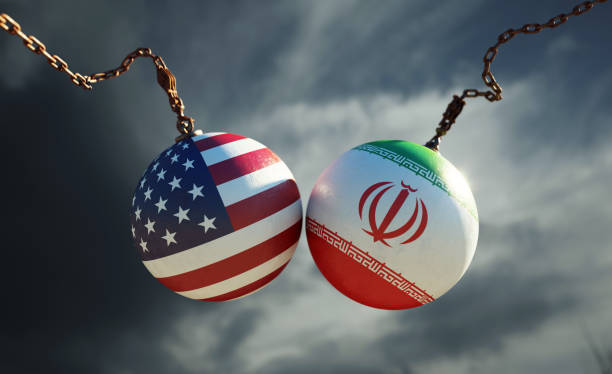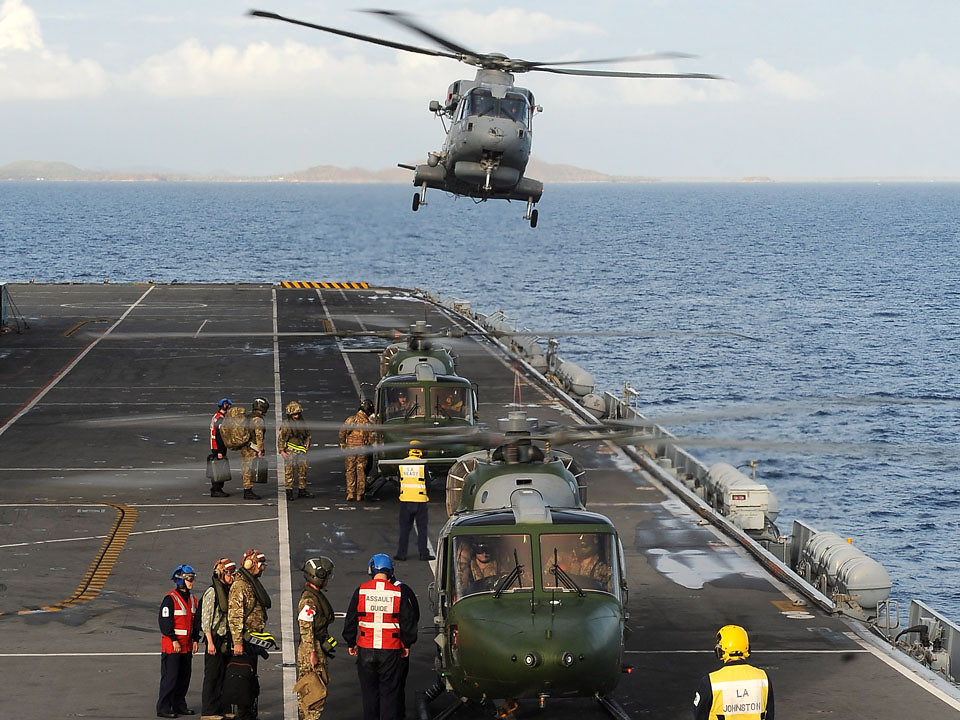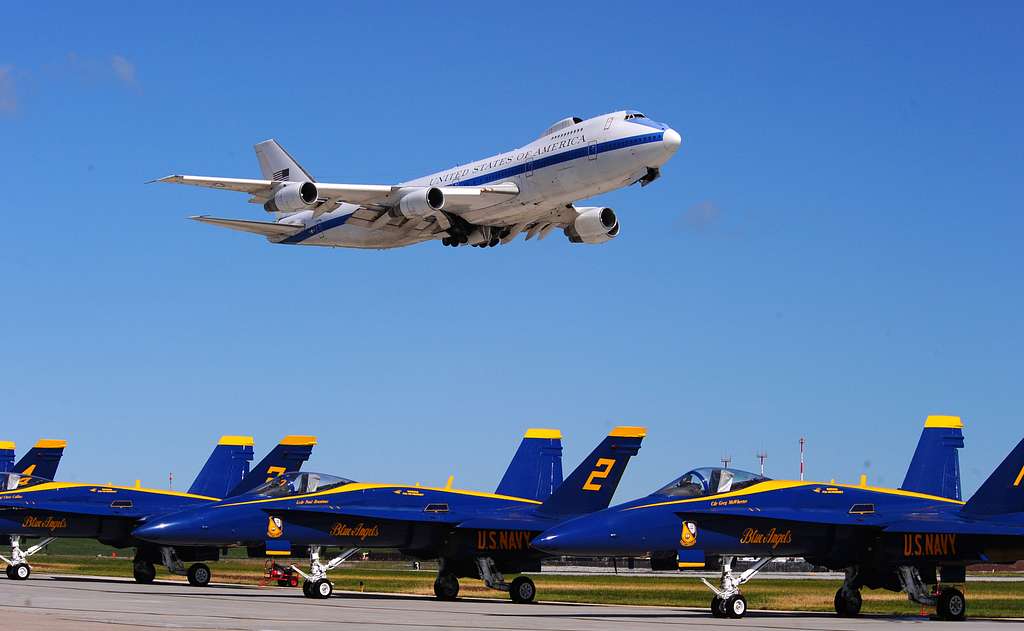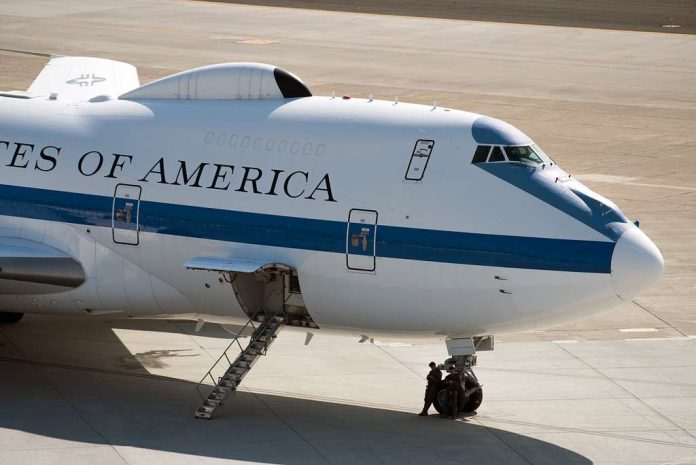
“We know where you’re hiding.” With these words, President Donald Trump escalated a war of words with Iran’s Supreme Leader, as a rarely seen aircraft the E-4B Doomsday Plane’ made a mysterious, closely tracked flight across the United States. To defense watchers, the presence of this airborne command center is more than a logistical curiosity; it is a portent, a statement, and an entrance into the United States’ most secret contingency planning. Recent deployments of the E-4B, synchronized with the recent increases in hostilities between the US, Israel, and Iran, have fueled renewed interest in the extraordinary capability and history of this Cold War marvel. Why is the E-4B unique, and why is its travel more important today than at any time in the past? Here are eight shocking facts about the plane’s design, mission, and strategic importance.

1. The E-4B: A Flying Command Center Designed for Crisis Dawn Farnham
The E-4B Nightwatch isn’t an airplane it’s America’s most comprehensive policy of insurance against catastrophe. Originally designed during the Cold War era, this Boeing 747-200 converted military aircraft is an airborne National Airborne Operations Center, ensuring that the President, Secretary of Defense, and Joint Chiefs of Staff can order US troops even in case the ground-based command centers are hit. The E-4B mission is maintaining government and military continuity in the most adverse conditions, ranging from nuclear conflict to natural catastrophes. Simple Flying describes how planes remain on standby at all times, with at least one E-4B prepared to fly at a second’s notice at least one E-4B remains in standby mode.

2. Designed to Survive Nuclear and Electromagnetic Attacks
The E-4B is designed to endure the unimaginable. With cutting-edge shielding, it is protected from both thermal and nuclear explosions and electromagnetic pulses (EMPs) that would destroy susceptible electronics. According to the US Air Force, Nightwatch’s robust electrical systems and secure satellite communications enable it to function even in the event of a nuclear detonation. The robust structure of the plane enables it to still coordinate military actions and direct retaliatory efforts in the event the home country is under attack withstanding nuclear explosions, electromagnetic pulses and cyber attacks.

3. Unparalleled Communications and Command Capabilities
The E-4B’s characteristic upper fuselage hump houses a cluster of 67 satellite dishes and antennas, giving it worldwide reach. This airbase command center has the ability to reach military assets, leaders of the world, and analysts anywhere on the globe. Under the aircraft’s skin, there are a number of working spaces: a command center, conference room, briefing space, teamwork spaces, and a communications center. The aircraft interior is designed to be able to hold as much as a crew of 112, comprising communications teams, mission specialists, and flight crews, all working together to have command and control centers for as many as 112 people.

4. Endurance That Redefines Airborne Operations
The endurance of the E-4B is absolutely remarkable. Although it can fly over 12 hours aloft without refueling, its true potential burns bright with in-flight refueling: the Nightwatch has flown as much as 35.4 hours continuously on one leg and is capable of staying aloft a week straight if necessary. This is accomplished by its four General Electric CF6-50E2 engines, each rated at 52,500 pounds of thrust, and maximum takeoff weight of 800,000 pounds endurance: 12 hours (unrefueled); 150+ hours (refueled). The ability to remain on continuously in operation ensures that national leadership is never out of reach, no matter what the crisis.

5. A History of High-Stakes Deployments
The E-4B’s ‘Doomsday Plane’ reputation is not speculative. It has been at the eye of some of America’s most turbulent moments. On September 11, 2001, an E-4B provided a secure haven for President George W. Bush as the country grappled to deal with the terrorist attacks. The aircraft has also supported FEMA disaster response operations for the likes of Hurricane Opal in 1995. The Sun states that the E-4B operates 24 hours a day, ensuring the nation’s top decision-makers always have an airborne secure command center operating 24/7 so that it is accessible at all times.

6. The Recent Flight: Signals Amid Escalating US–Iran Tensions
The E-4B’s flight last week from Louisiana to Maryland, tracked by aviation buffs, occurred as Middle East tensions mounted. The mission, utilizing the historic callsign ORDER01, raised speculation about its objective. While the US military assures that such missions are normal in an effort to maintain preparedness, the timing just hours following Iran’s Supreme Leader publicly rejecting Trump’s ‘unconditional surrender’ requests could not be avoided. At the time UNN was reporting, this news arrived as the US redirected at least 30 warplanes to Europe, prompting concerns of a regional war US has relocated at least 30 warplanes to Europe in three days.

7. The E-4B’s Unique Role in the US Arsenal And Its Coming Replacement
There is no other aircraft in the US Air Force that offers the E-4B’s combination of survivability, command, and endurance. Each E-4B took more than $223 million to construct, and they have been in service non-stop since the 1970s. Yet, their age is finally starting to catch up to them. In April 2024, Sierra Nevada Corporation was contracted by the Air Force for $13 billion to develop the next-generation Survivable Airborne Operations Center (SAOC) on the Boeing 747-8 platform with new systems and greater flexibility Air Force had contracted Sierra Nevada Corporation for $13 billion to replace the E-4B.

8. Beyond War: Humanitarian and Disaster Response Roles
While it’s most renowned for its World War mission, the E-4B has also been summoned to fill a critical role in humanitarian crises. Its use as a mobile command post makes it particularly useful in mass catastrophes, helping FEMA and other agencies when infrastructure on the ground is compromised. This dual-purpose aspect only serves to showcase the aircraft’s utility despite its age, even as it reaches the tail end of its service life. E-4B also supports many humanitarian missions.

The E-4B Nightwatch is a demonstration of the US’s resolve to hold on to command and control at whatever cost. Its recent deployment on the background of rising US–Iran tensions serves as a somber reminder of high stakes involved in global security and the unprecedented measures being taken to ensure leadership continuity. While the world remains in anticipation of the next chapter in the shifting geopolitics, the Doomsday Plane remains an affirmation of technological ingenuity as well as a haunting reminder of the era’s enduring uncertainties.


